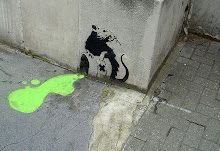
Not long ago, I was at a colleague's home, and she produced a bottle of spirit with buffalo grass in it. I had never heard of this organism, and found out that Hierochloe odorata is one of many plants used to impart a sweet grassy aroma to food and drink.
The compound responsible for this flavor is coumarin. You may have culinary knowledge of it by using woodruff (Galium odoratum) or tonka bean (Dipteryx odorata). The latter gives the compound its name through the original Tupi word kumarú. Tonka bean extracts and coumarin additives in food are also explicitly banned in food in the United States as of 1954. It also faces similar reprobations in Deutschland.
Alert readers and those past their first cup of coffee may notice a loophole: One can add woodruff or one of the many other plants containing coumarin to food legally. In fact, woodruff is explicitly legal in alcoholic beverages.
So why all the hubbub? Why make it illegal to any degree? Well, rats that injest coumarin break it down into coumarin 3,4-epoxide, which kills the liver. Coumarin and it's derivatives are used as a rodenticide for this reason. However, rats and humans are different, and humans metabolize coumarin to 7-hydroxycoumarin, which is markedly less toxic.
Coumarin is also in sweet clover, and if silage is made of it for livestock, some species of fungi will transform the coumarin to dicoumarol and cause the hemorrhagic Sweet Clover Disease. But again, humans are not cattle and also do not eat fermented clover.
Coumarin is also the precursor to the anticoagulant warfarin, which like many medicines can be toxic if misused. However, warfarin is synthesized from dicoumarol, and not coumarin directly, and coumarin does not have the anticoagulating effect that warfarin does.
I did a small amount of searching and could not find any incidents of coumarin poisoning in humans that was from coumarin itself and not due to a coumarin derivative. I welcome anyone to show me otherwise.
The bit that really shows how coumarin is not as scary as people think, which those who already clicked on some of the above links may have gleaned, is that most of us have already consumed substantial amounts of coumarin, especially in the form of cinnamon. Cassia cinnamon (Cinnamomum aromaticum), which is what is most common in supermarkets, has 2,100-4,400 PPM of coumarin. Although woodruff has about thrice as much and the tonka bean has about tenfold as much, cinnamon is still in the ballpark and not quite as much the pariah. Other commonly-consumed sources are coumarin include jujube (Ziziphus zizyphus), lavender (Lavandula angustifolia), peppermint (Mentha x piperita), celery (Apium graveolens), carrot (Daucus carota), and many more legal plants without scary warnings.
So the general public is clearly capable of consuming coumarin safely. We should not continue to ban coumarin based on old and misleading animal testing data and guilt by association. Think this is silly and needs to be changed? Contact the FDA and tell them how you feel. You may also want to ask them about safrole and thujone.
Important: Consume tonka bean, woodruff, and other plants with coumarin at your own risk. Read up on it further and make your own decision. I don't want to tell you what you can and cannot eat any more than I think a government should. Also, make sure you know the law in your area and make your own decisions.
Also, there is clearly a dearth of vegan recipes online for tonka. If you do decide to break the law try some, let me know what you come up with. Looks fairly easy to get tonka online, so have fun, don't die, and don't get me in trouble.





